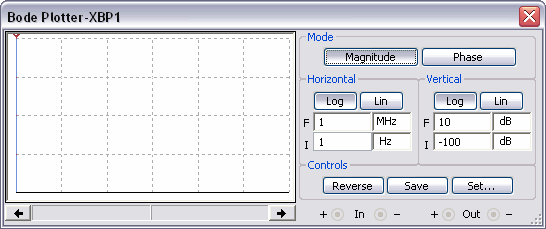
Scopes can now also make stability measurements such as gain and phase margin, power supply rejection ratio, and step response. Oscilloscopes, on the other hand, are already commonly used in the development of power supplies and allow direct characterization of noise and output ripple. One drawback to using a VNA, other than cost and complexity, is that VNA’s are best suited for the characterization of 50 ohm components. A VNA usually has a very high dynamic range, which allows it to make very precise impedance measurements. The first of these is a vector network analyzer or VNA. Two different categories of instruments can be used when measuring closed loop response. Instruments for measuring closed loop response The response is then measured and Bode plots are generated. This is normally done using a so-called injection transformer to avoid influencing the loop. A small disturbance signal is then injected across the resistor. A point should be chosen such that the impedance looking in the direction of the feedback loop is much larger than the impedance looking back. This method adds a very small resistor – usually on the order of 10 ohms – into the feedback loop. This can be tested using the voltage injection method. To better describe the application of Bode Plots, closed loop stability of a DC/DC power supply is measured by determining the closed loop response. Measuring closed loop stability with bode plots

And lower gain at higher frequencies means better noise immunity or lower output ripple. For example, a higher 0 dB crossover frequency usually means a faster response to load changes. In addition to safety considerations, performance is also affected by values that can be determined from Bode plots. A typical goal for phase margin is to have at least 45 degrees, and even higher values might be desirable in more critical applications. A loop with a gain margin of zero or even less would only be conditionally stable and could easily become unstable if gain changed. The greater the distance or margin the better, because higher gain and phase margins mean greater stability.

Gain and phase margins represent the distance from the points at which instability could occur.

These values, 0 dB and -180° are important because system instability occurs if these two values meet. Gain margin indicates the distance, in dB, from the measured gain to a gain of 0 dB. Gain margin, on the other hand, is measured at the frequency where the phase shift equals -180°. In other words, how many degrees the phase must be decreased in order to reach -180°. Phase margin is a measure of the distance from the measured phase to a phase shift of -180°. This is commonly referred to as the “crossover frequency”. Phase margin is measured at the frequency where gain equals 0 dB.


 0 kommentar(er)
0 kommentar(er)
